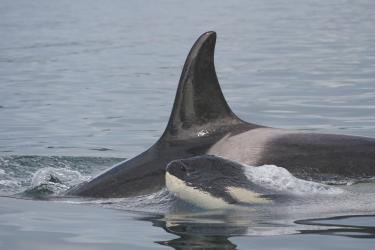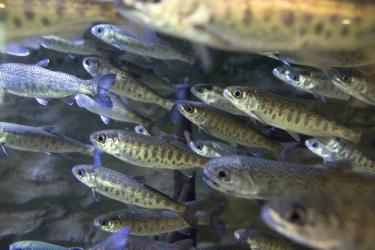Vessel traffic from commercial shipping, fishing, whale-watching, and recreational activities is a pervasive source of anthropogenic noise inputs in Southern Resident killer whale transboundary critical habitat.
Commercial shipping traffic is projected to increase even further from proposed and newly implemented port terminal expansion projects and export facilities in the Salish Sea. The approval of the Trans Mountain Expansion (TMX) project in Canada is expected to result in an increase in tanker transits from five to approximately 34 per month in the Salish Sea (www.transmountain.com/marine-plans).
Several proposed mitigation measures aim to reduce shipping-related noise in Southern Resident habitat. In 2018, we deployed calibrated acoustic recorders in inland water Southern Resident critical habitat to characterize baseline (present-day) soundscapes in areas associated with anticipated increases in vessel traffic.
The project provides vital data to monitor changes to Southern Resident soundscapes, including measurements of ambient noise levels and characterization of existing anthropogenic sources of noise inputs in U.S. waters before and potentially after implementation of mitigation measures.
The occurrence of Southern Residents through passive acoustic detections will also further our knowledge of their current use of the study area to better predict specific proposed mitigation measures' effectiveness. The NOAA's Ocean Acoustics Program largely funds this project.
Contact
Marla Holt, Marine Mammal Ecology Team


